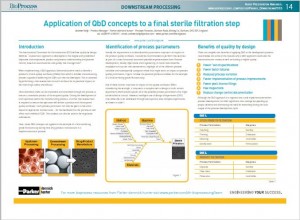 The International Committee for Harmonization (ICH) defines quality by design (QbD) as “a systematic approach to development that begins with predefined objectives and emphasizes product and process understanding and process control, based on sound science and quality risk management.”
The International Committee for Harmonization (ICH) defines quality by design (QbD) as “a systematic approach to development that begins with predefined objectives and emphasizes product and process understanding and process control, based on sound science and quality risk management.”
When implementing a QbD approach, biomanufacturers need to identify a product’s critical quality attributes (CQAs) from which a reliable manufacturing process capable of delivering the CQAs can then be developed. This is achieved by performing a risk assessment on each attribute for its potential impact on the final drug’s safety and efficacy.
Once identified, CQAs can be monitored and controlled through the process to ensure a consistent product of the required quality. During the development of each operation within the manufacturing process, a further risk assessment is required to ensure the operation will deliver a product with the required quality attributes. Each process parameter can then be given a risk score – based on experience and literature – for the likelihood that the parameter will affect each individual CQA. This analysis can also be used in the regulatory submission.
Here, these QbD concepts are applied to the example of a final sterilizing grade filtration step during final drug product manufacture in a biopharmaceutical process.
